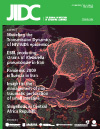Total lymphocyte count as a tool for timing opportunistic infection prophylaxis in resource-limited settings: a study from India
DOI:
https://doi.org/10.3855/jidc.1011Keywords:
total lymphocyte count, CD4 counts, opportunistic infection, tuberculosisAbstract
Introduction: In resource-limited settings, due to the high cost of CD4 cell count testing, physicians must decide about opportunistic infection (OI) prophylaxis without a laboratory evaluation of HIV stage and level of immune suppression. This study aimed to evaluate the correlation of total lymphocyte count (TLC), an inexpensive laboratory parameter, to CD4 count, and to determine a range of TLC cut-offs for the initiation of OI prophylaxis that is appropriate for resource-limited settings.
Methodology: Spearman correlation between CD4 count and TLC was assessed in patients attending the Anti-Retroviral Therapy (ART) centre at Mysore, India. Positive predictive value (PPV), negative predictive value (NPV), sensitivity, and specificity of various TLC cut-offs were computed for CD4 counts < 200 cells/mm3. Correlation and statistical indices were computed for all patients and for HIV patients with active tuberculosis.
Results: Good correlation was noted between the 106 paired TLC and CD4 counts (r = 0.3497).TLC < 1200cells/mm3 had 88.14% sensitivity and 34.78% specificity for CD4 count < 200 cells/mm3. In those patients with active tuberculosis, TLC< 2000cells/mm3 had 95.24% sensitivity and 100% specificity for CD4 count < 200cells/ mm3.
Conclusions: TLC could serve as a low-cost tool for determining when to initiate prophylaxis in resource-constrained settings.Downloads
Published
How to Cite
Issue
Section
License
Authors who publish with this journal agree to the following terms:
- Authors retain copyright and grant the journal right of first publication with the work simultaneously licensed under a Creative Commons Attribution License that allows others to share the work with an acknowledgement of the work's authorship and initial publication in this journal.
- Authors are able to enter into separate, additional contractual arrangements for the non-exclusive distribution of the journal's published version of the work (e.g., post it to an institutional repository or publish it in a book), with an acknowledgement of its initial publication in this journal.
- Authors are permitted and encouraged to post their work online (e.g., in institutional repositories or on their website) prior to and during the submission process, as it can lead to productive exchanges, as well as earlier and greater citation of published work (See The Effect of Open Access).








